Navigating the aftermath of the COVID-19 pandemic has left many medical practices contemplating a crucial question: How can they enhance profitability while upholding the highest standards of patient care? Fortunately, there are numerous strategies that can be employed to achieve this delicate balance. Consider the following insights:
1. Negotiate Higher Payer Rates:
Reviewing payer contracts is a pivotal step in the pursuit of increased revenue. Physicians should assess their existing contracts and fee schedules, building a compelling case for rate hikes based on the value they provide. Factors such as extended business hours, weekend telehealth appointments, and positive Medicare quality data can be highlighted. Exploring options like escalator clauses or carve-outs for high-utilization services can further optimize reimbursement. Physicians are urged not to settle for less than their worth and to be willing to part ways with payers unwilling to offer reasonable rates.
2. Diversify Services:
Exploring the addition of ancillary services can be a game-changer for medical practices. Services like chronic care management, transitional care management, remote patient monitoring, and behavioral health integration can not only enhance patient care but also contribute to revenue growth. Consideration may also be given to selling products that align with patient interests, such as skin care items or orthotics.
3. Telehealth Expansion:
Capitalize on the growing acceptance of telehealth services. Expand telehealth offerings to reach a broader patient base and improve accessibility. This not only caters to patient preferences but also has the potential to increase appointment volumes.
4. Cost Reduction Strategies:
Efficiency gains can be achieved by scrutinizing and renegotiating vendor contracts. Practices should evaluate the services provided by vendors, such as managed IT services and payment providers, and consider alternatives if necessary. One of the simplest and most impactful ways to reduce costs is to witch to eliminate your credit card processing fees by transitioning to a dual pricing model or cash discount merchant processing. This method of payment processing operates the same as traditional credit card processing, except the patient is offered a lower cash price or incrementally higher credit card price at the time of checkout. The incremental cost is retained and used to pay off the processing fees at the end of every month, effectively saving the practice 3.5-4.5% of its profits every year. Some of the best credit card processor's today offer this program. Additionally, reviewing and potentially downsizing office space in light of remote work trends can be a cost-saving measure. Regularly reassessing medical malpractice insurance, exploring cyber liability coverage, and optimizing other overhead costs can collectively contribute to substantial savings.
5. Focus on Patient Attraction and Retention:
Growing the patient base is integral to revenue increase, but retaining patient loyalty is equally vital. Prioritizing convenience through online bill payment, lab result viewing, health document sharing, and secure messaging fosters a patient-friendly environment that encourages loyalty. Invest in marketing strategies to attract new patients while maintaining a focus on retaining existing ones through personalized and convenient services.
6. Data Analytics for Informed Decision-Making:
Utilize data analytics to make informed decisions. Analyze patient demographics, service utilization, and revenue patterns to identify opportunities for improvement. Data-driven insights can guide strategic planning and resource allocation.
7. Optimize Staff Efficiency with Technology:
Leveraging healthcare technology can significantly enhance staff efficiency and reduce costs. Electronic prescribing, digital patient statements, and mobile check-in streamline processes, saving time and resources. Embracing artificial intelligence for tasks like eligibility checks, claim status verification, and real-time monitoring of electronic remittance advice contributes to overall operational efficiency. Invest in staff training to enhance efficiency. Ensure that the team is proficient in using the latest technology and follows streamlined workflows. Encourage ongoing education to keep staff updated on industry trends and best practices.
8. Continuous Quality Improvement:
Prioritize continuous quality improvement initiatives. Implement evidence-based practices, engage in quality reporting, and actively seek patient feedback. Positive outcomes and patient satisfaction contribute to a positive reputation and increased patient referrals.
Conclusion:
Enhancing medical practice profitability requires a comprehensive approach, utilizing healthcare technology to streamline operations. Physicians must proactively take steps to boost healthcare revenue, recognizing that organic growth may not be sufficient. Explore how PayLo Pro can support these initiatives by visiting https://www.paylopro.com/





